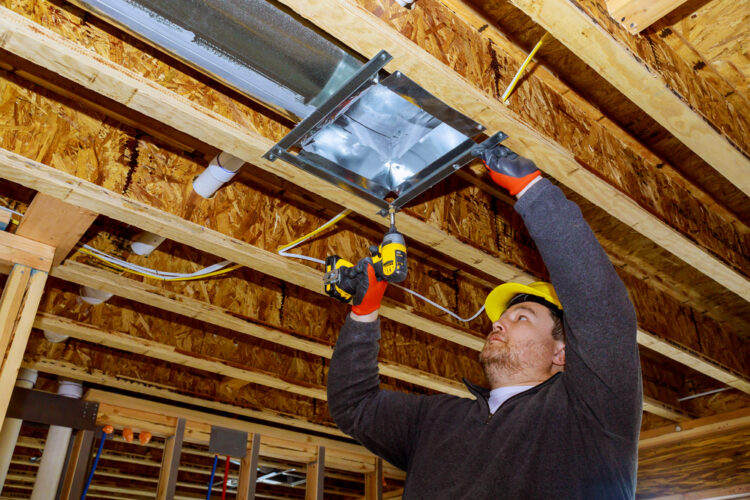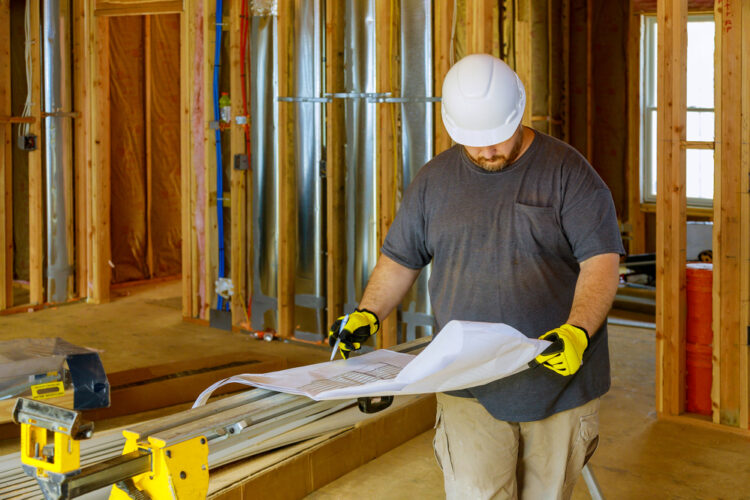So, you’ve been sweating from working in the garage for a while now.
Well, why not go ahead and add a vent to provide some last-minute relief?
The obvious answer would be to go for this option.
However, there are issues here as well.
Firstly, you’ll need to check whether your AC can handle another vent addition.
Then, you’ll need to consider the efficiency deduction.
When you’re done focusing on these factors, start adding a vent to existing ductwork.
Yes, it’s entirely possible to add a vent into the existing ductwork. But, you’ll need to check the compatibility of the AC and heater. After this, locate spots and mark them. Then, cut the piece and add the vent cover after ensuring the right fit. Lastly, drill the holes and screw the vent in place.
But, that’s just a scratch of what we have in store.
To know more, you’ll have to begin reading the article. So, let’s begin:
Adding Vent to Existing Ductwork: Worth The Effort?

Before knowing how to add vents to existing ductwork, it’s essential to know whether it’s worth it. This is because you don’t want to add them for no reason.
Well, adding a vent seems to have some pros and cons. So, let’s check them out first-
The Pros
Adding vents to ductwork can increase the resale value of your home. Even though making these vents will add up to the total furnishing cost of your house. Hence, when it comes to profit, the vents will play a part.
Furthermore, vents allow fresh air inside the system. Here, the circulated fresh air kills all types of pollutants and toxicity. As a result, indoor air quality gets better. And, it’ll even benefit from the health factors.
The Cons
The biggest con of adding vents to existing ductwork is the efficiency reduction. Here, the overall efficiency of the room will be deducted when you add in that vent. And, what does deducting the efficiency of the room mean?
Well, this means you’ll have an increase in your electric bills. So, you won’t be able to save on electricity costs.
How to Add Vent to Existing Ductwork: 6-Step Guide

Now that we’ve broken down the pros and cons, you’ll know whether it’s okay or not to add vents. And, if you’ve made it to this section, you’re willing to know the simple steps.
Just know, there is one consideration before starting the installation process. And, what is that? You’ll need to check whether your AC and heater can handle another vent addition.
Fortunately, the steps are pretty easy. Anyone can perform them with the correct guideline. Follow them clearly and you’ll complete the work in no time. So, let’s begin-
Tools Needed
Now, that you’re done collecting all the tools needed for the job. Let’s begin with the step-step process-
Step #1: Locate The Spot & Mark It
Before even starting work, wear protection. So, using a face mask, goggles, and gloves will do. After you’re done wearing them, you’re all set to go.
Firstly, locate the position of the existing duct board where you’ll want to add to the vent. Now, take the marker and lock the position.
Step #2: Cut Duct Piece & Mark Vent Cover
As you’ve just located the position on the existing duct, it’s time to cut it. But, how? Well, you’ll need to use the metal shear and the drill. By using these tools, cut the specific location.
After this, take measurements of the vent cover. Here, this will determine the place where you’ll install the vents. So, take the marker and mark the area you’re going to cut.
As you’ll need to bring the metal shears inside the sheet, cut the hole big enough. But, why? Adding a more giant hole will allow the shears to fit easily.
Before jumping in with the tools, make sure you know how to use shears or tin snips for cutting metal.
Moreover, it’ll provide the added flexibility of cutting the template. And, you can cut it easily by following the traced hole. This hole was made earlier by following the vent cover.
Step #3: Add The Vent
By now, you’ve cut the template by following the traced hole. Now, hold up the vent. Also, ensure that the vent fits the hole perfectly by holding it up against it.
Here, the hole needs to be the size of the vent. This is mainly because the vent won’t fit in if the hole is too big. Furthermore, the installation process would get tricky quite quickly.
So, hold the vent up and ensure the correct size. Besides, it won’t allow any bit of extra space on the edges of the vents. Even though you can fill the edges by caulking the tile floor, the vents won’t still fit properly. Hence, it’s better to take the correct size.
Step #4: Cut Insulation Around Marked Hole
As you’ve marked the hole and administered the vent’s fit. It’s time to cut the insulation part. So, cut any bit of insulation that covers the traced hole. Using a scissor to cut the insulation would do just fine.
Below are some of the top-rated scissors in the market. Let’s take a look at them:
However, always ensure that you aren’t going overboard with the insulation cutting. So, it’s better to spare some insulation along the surrounding edges.
Now, as you’ve cut the insulation, check the fit of the vent again. This is because cutting the insulation can cause a bit of alteration to the overall vent’s fit.
Step #5: Mark Holes in Vent & Drill Them
After ensuring the fit of the vent yet again, it’s time to move forward. So, start by marking the screw holes on the vent. When you’re done marking them out, it’s time to drill them using a power drill.
But, you’ll need to be careful when using the power drill. This is because it’s better to go slow and eye the vents when drilling. That way, you won’t go overboard with it.
Step #6: Screw the Vent
Yes, we get it, you’ve followed all the steps till this point. Well, there isn’t much left. So, starting, screw the vent’s nuts to the duct. Here, you might need the help of a driver.
Using a driver can ensure that the nuts are tightly put in place. And, you’ll be able to fill in gaps with walls when ensuring the tightest fit of the vent.
In the end, screwing the vents in place and ensuring a tight fit does the trick.
Some Factors to Consider

Before ending the article, we’d like you to know some things. These factors will determine whether your room is ready to have another vent. So, let’s check them out-
Enough Tonnage or Not?
Adding vents won’t be an issue if the HVAC units have sufficient tonnage. But, how should you determine the tonnage? Well, finding BTUs will do the trick.
Now, when you find the BTU number, divide it by 12,000. And, the result is the AC’s tonnage. For example- if the AC has 42,000 BTUs, divide the unit by 12,000. The answer: 3.5 tons is the tonnage of the AC.
If the AC has enough tonnage then go for the option of adding it.
Deduction of Efficiency
That’s right, adding a vent will affect the overall efficiency. It’ll deduct the efficiency of the room. So, you might have to spend a bit more on electricity bills.
But, if you go for a more significant ton option, you might fix this problem and save up on bills.
FAQs
Is adding a vent to the existing ductwork a hard task?
No, adding a vent to the existing ductwork is not hard. You can do it yourself by following a guideline. The best part is that you won’t even need the help of a professional.
What is the cost of adding vents to existing ductwork?
The cost of adding vents can vary based on the materials used and the accessibility. However, the average time for adding the vents is about: $250 – $1,000.
Is it possible to screw into ductwork?
Yes, it’s possible to screw into existing ductwork. By pushing screws attached to the end of the drill bit, you can screw into ductwork easily.
What problems will happen when homes don’t have adequate air vents?
Not having adequate air vents inside homes can cause problems like – leaking, dangerous fumes, and even toxicity. Besides, negative pressure will be created where the outside toxic air will be pulled inside. And, it’ll make the overall environment quite unhealthy.